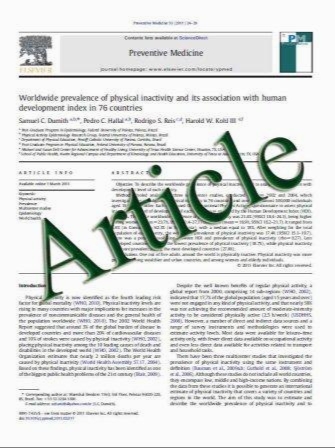Hypersensitivity Reactions to Contrast Media: Prevalence, Risk Factors and the Role of Skin Tests in Diagnosis – A Cross-Sectional Survey
- نوع فایل : کتاب
- زبان : انگلیسی
- مؤلف : Ozlem Goksel a Omur Aydn a Cetin Atasoy b Serdar Akyar b Yavuz Selim Demirel a Zeynep Misirligil a Sevim Bavbek a
- چاپ و سال / کشور: 2011
Description
Background: Hypersensitivity to contrast media (CMs) may be common and serious. Aim: To evaluate the prevalence of CM hypersensitivity, risk factors associated with it and the role of skin testing in its diagnosis. Methods: A structured questionnaire was administered to patients who underwent computed tomography during a 1-year period. Skin tests with CMs, including skin prick tests (SPTs), intradermal tests (IDTs) and patch tests (PTs), were conducted on CM reactors (n = 24). Volunteers who tolerated CM exposure or had never been exposed to any CMs served as controls (n = 37). Results: A total of 1,131 patients (630 females and 501 males; mean age 55 8 14.2 years) were enrolled in the study. The prevalence of historical and current CM reactors was 33/1,131 (2.92%) and 8/1,105 (0.72%), respectively. The skin was the most affected site, with mild to moderate reactions. Female gender, a history of doctor-diagnosed asthma, drug allergy, food allergy and psychiatric diseases were significant risk factors. The sensitivities of SPTs and early readings of IDTs in the diagnosis of immediate reactions were 0 and 20%, respectively, and the specificities were 94.6 and 91.4%, respectively. For early readings of IDTs, the positive predictive value (PPV) and negative predictive value (NPV) were 40 and 80%, respectively. For nonimmediate reactions, the sensitivities of delayed readings of IDTs and PTs were 14.3 and 25%, respectively; specificity was 100% for both tests. The PPV was 100% for both of these tests, and the NPVs were 85.4 and 82.4%, respectively. Conclusions: Our findings are comparable with the incidence, profile and risk factors associated with CM hypersensitivity reported previously. Skin testing with CMs has a high specificity, but its role in diagnosis is limited due to low sensitivity.
Int Arch Allergy Immunol 2011;155:297–305 Received: February 16, 2010 Accepted after revision: August 25, 2010 Published online: February 3, 2011


